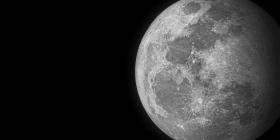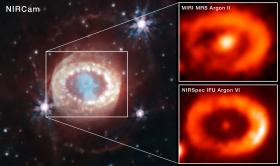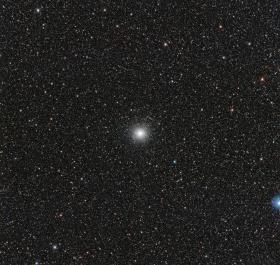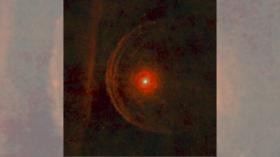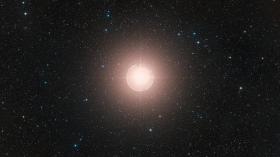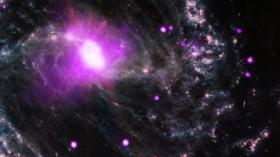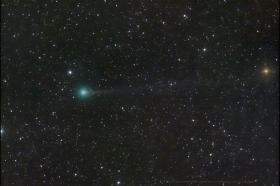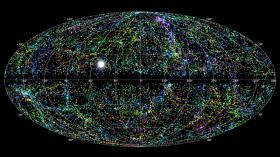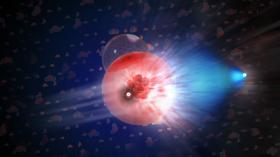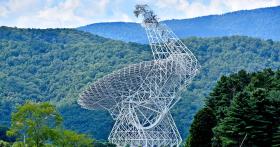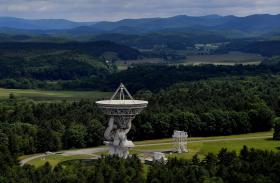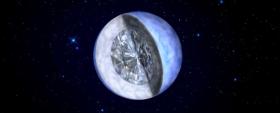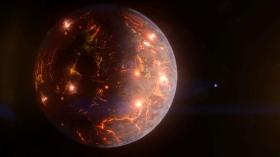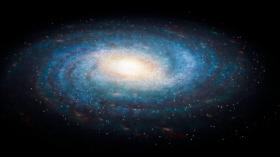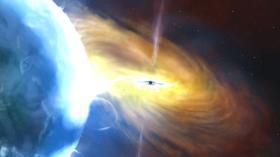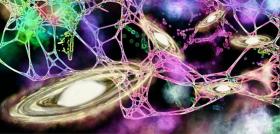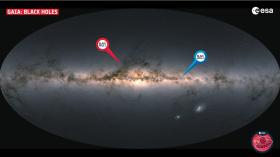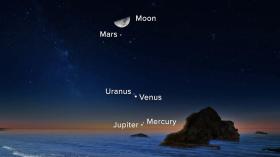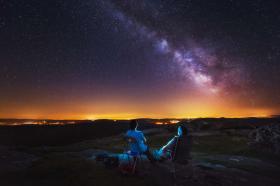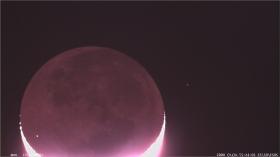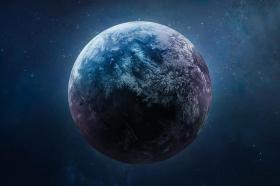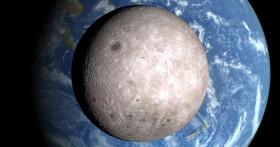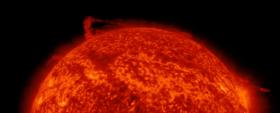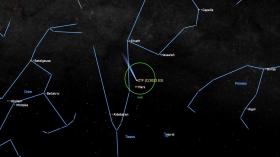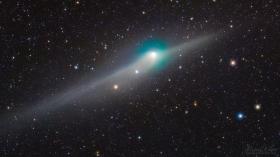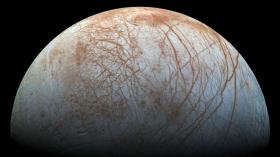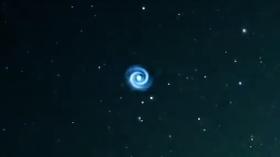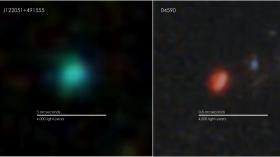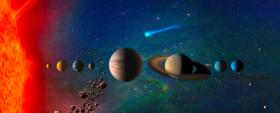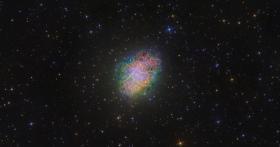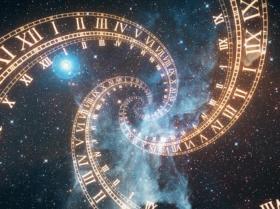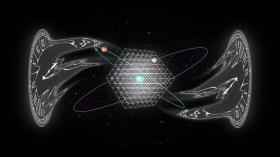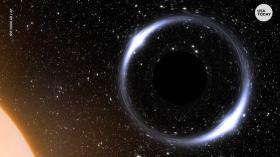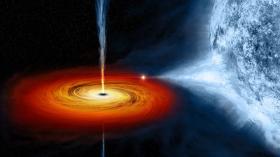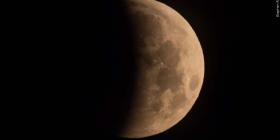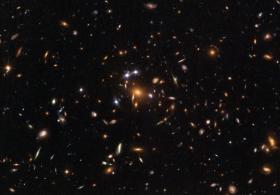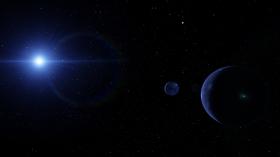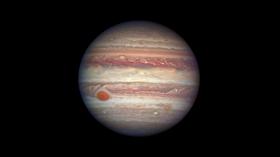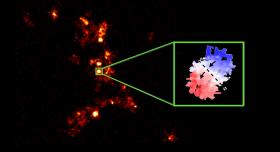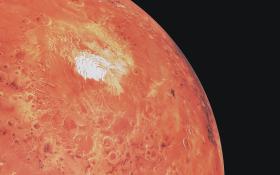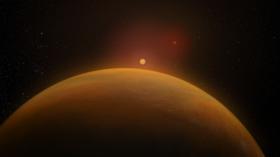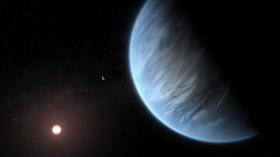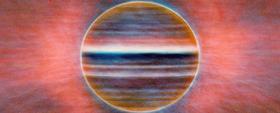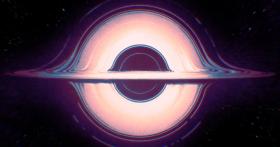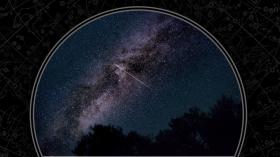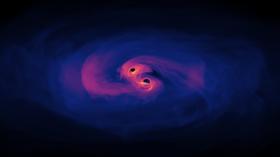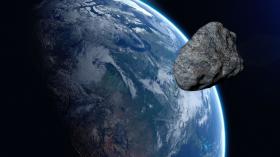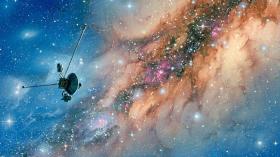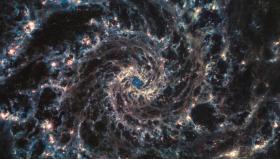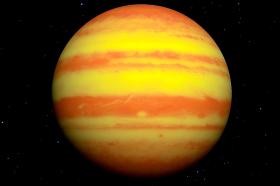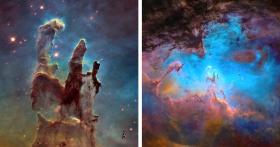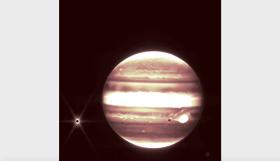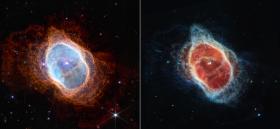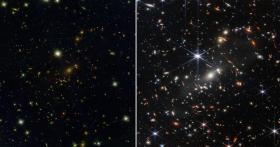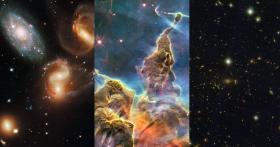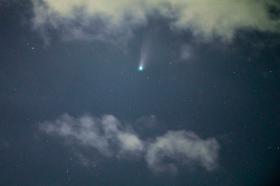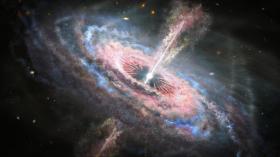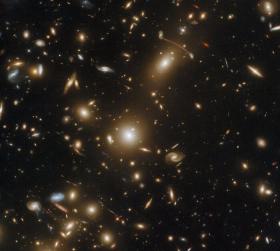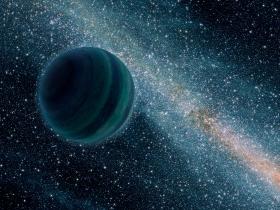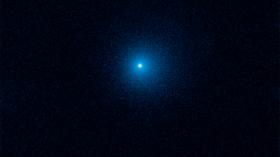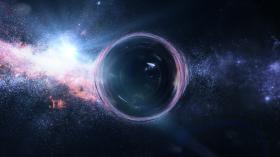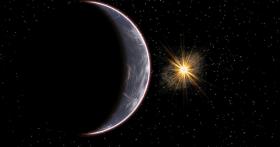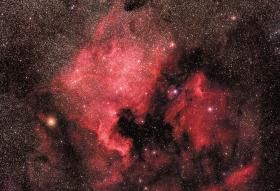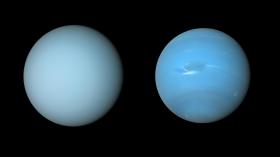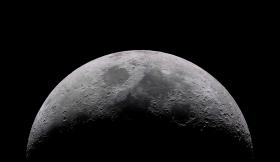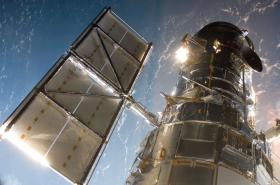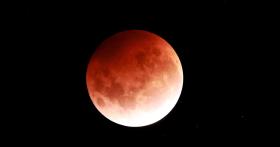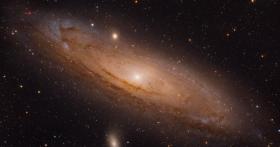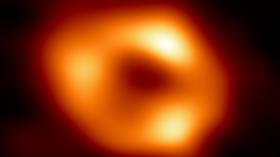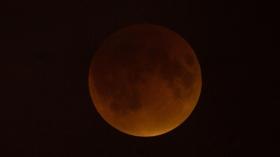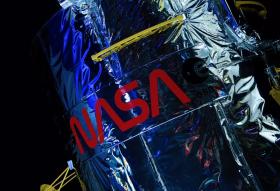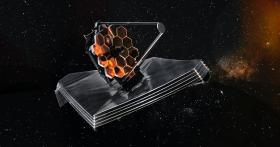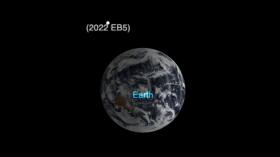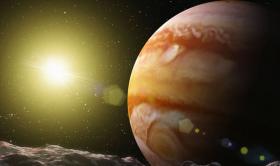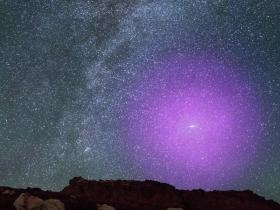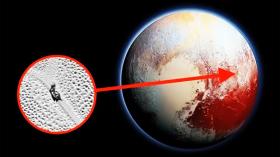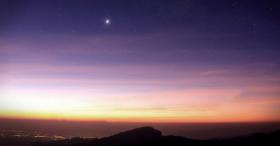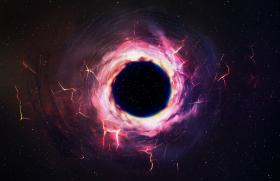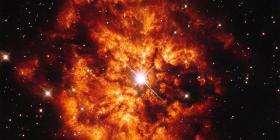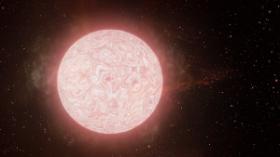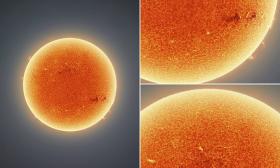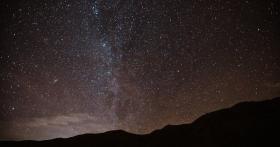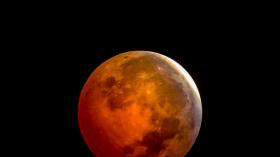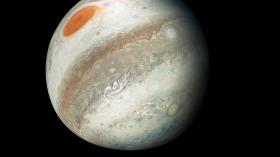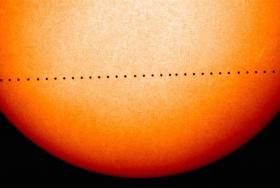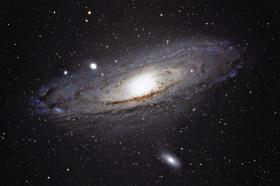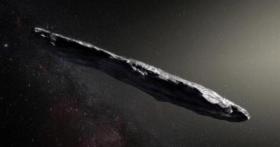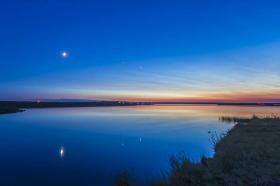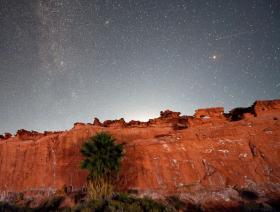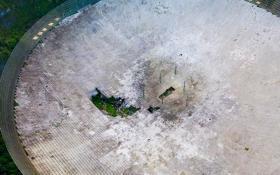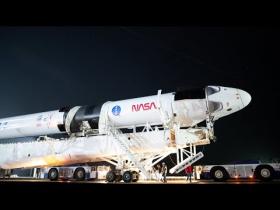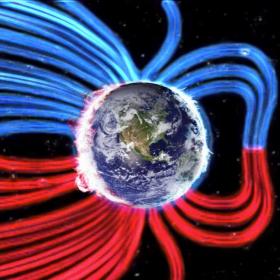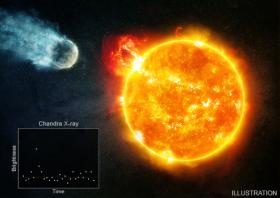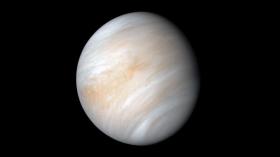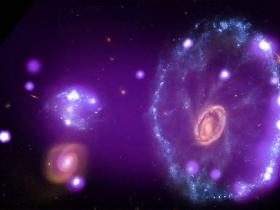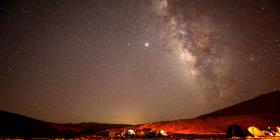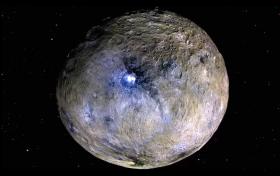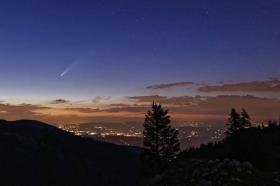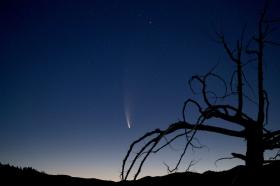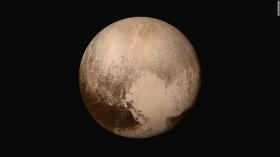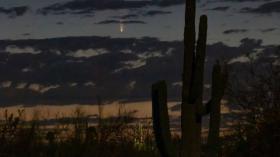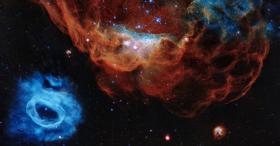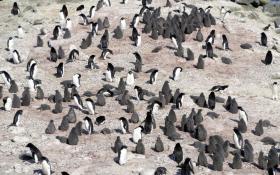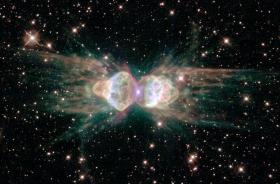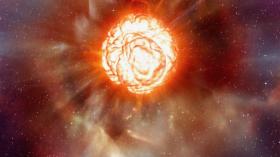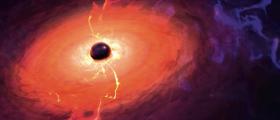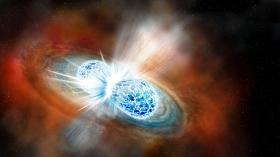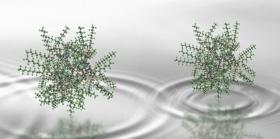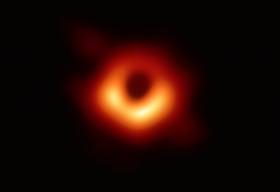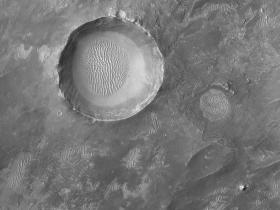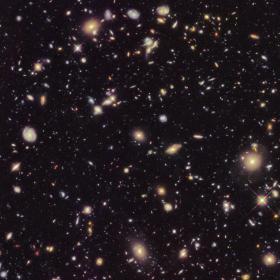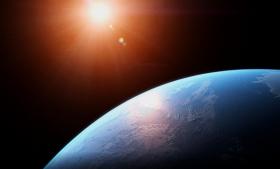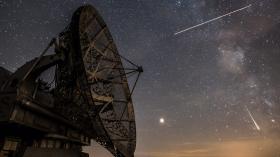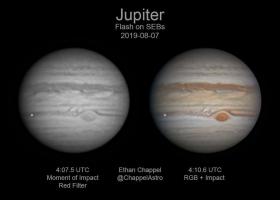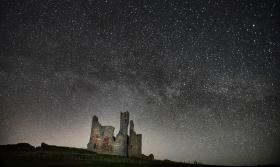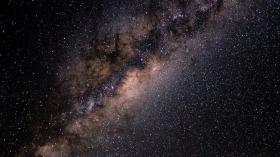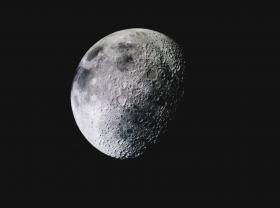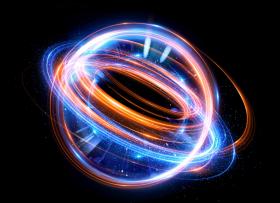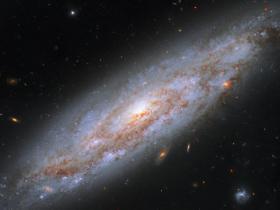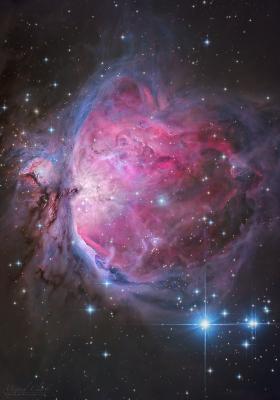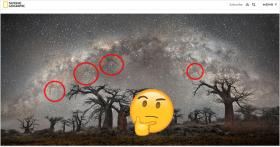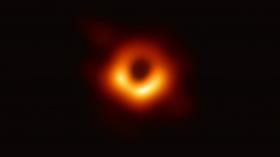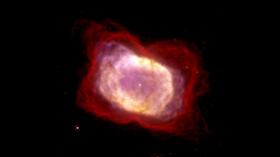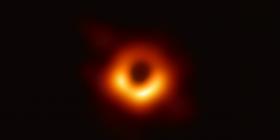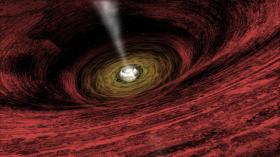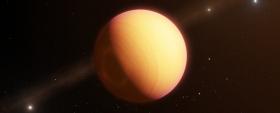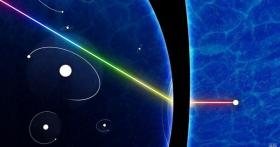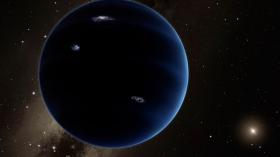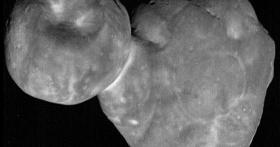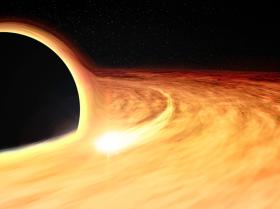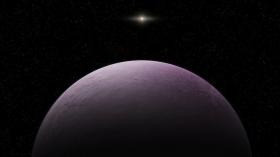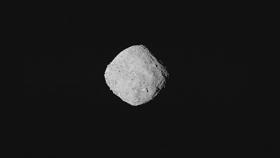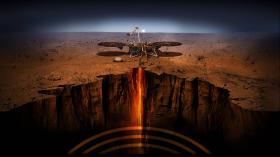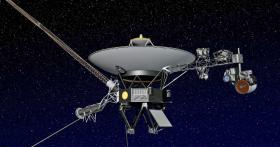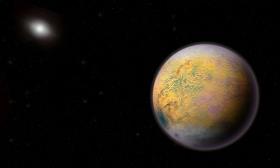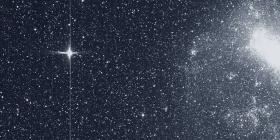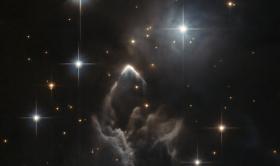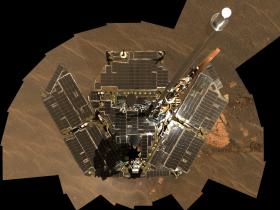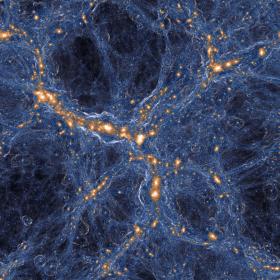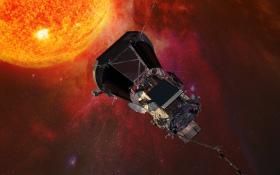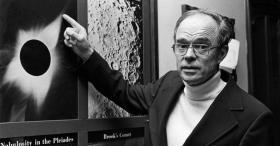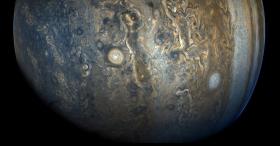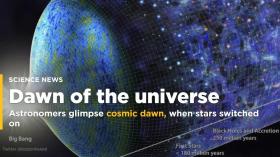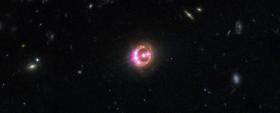#astronomy
Miscellaneous | Interesting & Helpful Information
The Moon May Have Never Had a Magnetic Field at All. So What Does This Mean?
For one thing, it helps us better understand how the moon formed as well as its progression over time.
Science & Technology | Science
James Webb Space Telescope spots neutron star hiding in supernova wreckage
Using the James Webb Space Telescope, astronomers spotted a neutron star in Supernova 1987A, the aftermath of a stellar explosion in the Large Magellanic Cloud.
Science & Technology | Science & Technology
How dark is space?
Space is dark, but how dark? Why is it not bright with starlight and could two spaceships travelling in deep dark outer space see each other?
Science & Technology | Cool Stuff
One of the brightest stars in the sky will 'blink out' on Dec. 12. Here's how to watch. | Live Science
Betelgeuse, the most famous red supergiant star and one of the sky's brightest, will disappear for up to 12 seconds during an ultra-rare occultation by asteroid 319 Leona.
Miscellaneous | Interesting & Helpful Information
Iconic Star Betelgeuse Will Temporarily Vanish From the Sky Next Week
In a rare cosmic event, an asteroid will eclipse Betelgeuse on December 11, causing a brief but significant disappearance of this bright, red star.
Science & Technology | Science
Powerful observatories reveal 5 breathtaking corners of the universe hidden to human eyes (images)
NASA has highlighted a new set of vibrant cosmic images, each one painted by the observatories that help us see what our eyes cannot.
Science & Technology | Cool Stuff
Newly discovered comet visible in night sky this weekend
A comet called Nishimura discovered just a month ago could be visible to the naked eye this weekend, offering stargazers a once-in-a-437-year chance to observe the celestial visitor.
Science & Technology | Science
What are fast radio bursts? | Space
Fast radio bursts — fleeting blasts of energy that are brighter than entire galaxies — remain mysterious. Here's what we know (and don't know) about FRBs.
Science & Technology | Science
10 Facts About Neutrinos, the Weirdest Particles in the Universe
Trillions of neutrinos zoom through you every second. Here's what you should know about these mysterious, nearly mass-less subatomic particles.
Miscellaneous | Interesting & Helpful Information
An Enormous Gravity ‘Hum’ Moves Through the Universe | Quanta Magazine
Astronomers have found a background din of exceptionally long-wavelength gravitational waves pervading the cosmos. The cause? Probably supermassive black hole collisions, but more exotic options can’t be ruled out.
Miscellaneous | Interesting & Helpful Information
Astronomers announce major discovery about gravitational waves - The Washington Post
The claim of a gravitational wave background suggests the universe is constantly roiled by violent events that happened over the past 13 billion years.
Science & Technology | Science
White Dwarf Star Enters Its Crystallization Era, Turning Into A 'Cosmic Diamond'
To us, stars may resemble cut jewels, glittering coldly against the velvet darkness of the night sky.
Science & Technology | Tech
AI is helping astronomers make new discoveries faster than ever before
AI and neural networks have greatly sped up astronomers' work, allowing them to work through massive amounts of data thoroughly, which would have been near impossible by human effort alone
Science & Technology | Science
The Milky Way galaxy may be a different shape than we thought
New measurements suggest that the traditional view of the Milky Way as a galaxy with four major spiral arms could be wrong.
Science & Technology | Science
Boom! Astronomers just watched the largest explosion in space rage for 3 years
The blast lasted for three years and is over ten times as powerful as the brightest supernova .
Science & Technology | Cool Stuff
Alignment of galaxies millions of light years away supports general relativity
Scientists from research institutions including Kyoto University have confirmed that the intrinsic alignments of galaxies have characteristics that allow it to be a powerful probe of dark matter and dark energy on a cosmological scale.
Science & Technology | Science
2 newfound black holes are the closest ever to Earth and like nothing seen before
The two black holes lie just 1,560 and 3,800 light-years from our planet, respectively.
Science & Technology | Cool Stuff
How to see Mercury, Venus, Mars, Jupiter and Uranus at the same time
A rare planetary alignment has arrived, and all you have to do to enjoy it is to know where and when to look.
Science & Technology | Science & Technology
You'll Be Able to See 5 Planets in the Night Sky All at Once This Month
At the end of the month, a planetary alignment involving Mercury, Venus, Mars, Jupiter, and Uranus will be visible in the night sky. The best way to witness it will be March 28 after sunset.
Science & Technology | Science
Boom! Japanese astronomer catches meteorite smashing into the moon (video)
Japanese astronomer Daichi Fujii captured the telltale flash of a meteorite impacting the moon, causing a brief flash on our celestial neighbor's nightside.
Science & Technology | Science
'Hidden' planet at edge of our solar system could be five times the size of Earth
Scientists believe that a huge planet which has never been seen by astronomers could be lurking, almost invisibly, at the dark edges of our solar system.
Science & Technology | Cool Stuff
NASA Releases Stunning 4K Video of Apollo 13 Views of the Moon, Ending All Conspiracy Theories - news.scienceclub
NASA has developed a stunning view of the Moon using data from the Lunar Reconnaissance Orbiter (LRO) and combined with the views recorded by Apollo 1
Science & Technology | Science
Part of The Sun Has Broken Off And Formed a Vortex... What The Heck Is Going on?
For all that the Sun is a ubiquitous and vital part of our lives, a lot about it remains baffling.
Science & Technology | Science
See the green comet near Mars in the night sky this week
Comet C/2022 E3 (ZTF) will be close to Mars in the Taurus constellation from Feb. 9 through Feb. 14, making it easier to locate as it dims in the night sky.
Science & Technology | Science
Green comet flaunts its tail in dazzling deep space photo
A new image from astrophotographer Miguel Claro shows a close-up view of comet C/2022 E3 (ZTF) on Jan. 22, 2023 immersed in a colorful starfield.
Science & Technology | Science & Space
NASA funds nuclear probes for icy moons, huge new space telescopes and other far-out tech ideas
Each of the 14 funded NIAC Phase 1 proposals will receive $175,000.
Science & Technology | Science & Technology
Japanese telescope captures mysterious blue spiral in Hawaii
A Japanese telescope camera captured a 'flying spiral' in Hawaii shortly after SpaceX launched a new satellite.
Science & Technology | Science
Rare 'green pea' galaxy may be the most 'chemically primitive' galaxy ever discovered
A 'green pea' galaxy seen in an early James Webb Space Telescope image may be the most chemically primitive galaxy ever discovered.
Science & Technology | Science & Space
We've Never Found Anything Like The Solar System. Is It a Freak in Space?
Since the landmark discovery in 1992 of two planets orbiting a star outside of our Solar System, thousands of new worlds have been added to a rapidly growing list of 'exoplanets' in the Milky Way galaxy. We've learnt many things from this
Miscellaneous | Other Kinds of Whatnot
Photographer Captures Supernova That Exploded in the Year 1054
Astrophotographer Andrew McCarthy captured a star that went supernova back in the medieval period and is known as the Crab Nebula.
Science & Technology | Cool Stuff
A Physicist Came Up With Math That Shows 'Paradox-Free' Time Travel Is Plausible : ScienceAlert
No one has yet managed to travel through time – at least to our knowledge – but the question of whether or not such a feat would be theoretically possible continues to fascinate scientists.
Science & Technology | Cool Stuff
Why the [expletive] can’t we travel back in time? | Ars Technica
If the inability to time travel were a fundamental part of our Universe, you’d expect equally fundamental physics behind that rule.
Science & Technology | Technology
This hidden Apple Watch feature is stellar — try it now | Tom's Guide
This hidden Apple Watch feature lets you use the Astronomy watch face to see where our solar system's planets align in the past and future.
Science & Technology | Cool Stuff
This is Huge: Scientists Successfully 'Warp' Time In The Lab, Based On Einstein's Theory
Recently, scientists were able to "warp" time on the smallest scale ever. Time may be warped in the presence of high gravitational fields/high speeds,
Science & Technology | Cool Stuff
The General Relativity Rabbit Hole: Unraveling Space, Time and the Fourth Dimension - CNET
Parsing Albert Einstein's theory of our universe -- an idea that's utterly mind-bending, yet seemingly shatterproof.
Science & Technology | Science
At just 1,600 light-years away, this is now the closest known black hole to Earth
The dormant black hole, dubbed Gaia BH1, sits 1,600 light-years away, three times closer than the last black hole to hold the record.
Science & Technology | Science
NASA X-ray observatory reveals how black holes swallow stars and spit out matter
A joint NASA/Italian space mission has put its sunglasses on to observe polarized X-ray light from a corona of hot gas around the Cygnus X-1 black hole.
Science & Technology | Cool Stuff
A total lunar eclipse is expected to occur next week
The total eclipse will take place on Nov. 8 of this year, NASA says.
Science & Technology | Science & Technology
Astronomers Witness Light Delayed by Almost 7 Years as It's Warped by a Galaxy Cluster
Way back in 1979, astronomers spotted two nearly identical quasars that seemed close to each other in the sky. These so-called 'Twin Quasars' are actually separate images of the same object.
Science & Technology | Science & Technology
Astronomers Unveil Technique For Finding Exoplanets And Any Signs Of Life On Them
Exoplanets around white dwarf stars are particularly hard to find. But a new method involving the James Webb Space Telescope could soon reveal them
Science & Technology | Cool Stuff
How can you see Jupiter tonight?
Jupiter will come within its closest point of Earth in nearly sixty years today, giving an excellent opportunity for amateur stargazers to see the largest planet in the solar system.
Science & Technology | Science & Space
A Galaxy With Ten Times the Mass of the Milky Way is Preparing to Become a Quasar
New research by an international team of scientists has revealed new insight into how rare, dusty galaxies evolved during the early Universe.
Science & Technology | Science
James Webb's first photo of Mars reveals new data about the Red Planet
James Webb has captured its first photo of Mars alongside an atmosphere composition test, providing new data about our neighboring planet.
Science & Technology | Science
Discovery of alien world with tilted orbit puzzles astronomers | Space
The 3D modeling of a planet's orbit around a star in a binary star system is raising new questions about how both gas giant planets and binary stars form.
Science & Technology | Science & Technology
Scientists discover colossal ocean may completely cover this planet
Astronomers recently announced that the exoplanet TOI-1452 b is close in size to Earth and lies in a region of its solar system where liquid water could exist.
Science & Technology | Science & Technology
Scientists Have Found A New Way to Detect Alien Worlds Beyond Our Solar System
We have discovered thousands of exoplanets in recent years.
Science & Technology | Cool Stuff
The Most Famous Paradox in Physics Nears Its End | Quanta Magazine
In a landmark series of calculations, physicists have proved that black holes can shed information.
Science & Technology | Science & Technology
How to See the Perseid Meteor Shower in 2022
The Perseid meteor shower will be hard to observe in 2022, but it's still worth looking up at its peak between Thursday, August 11 and Friday, August 12.
Science & Technology | Science
Why gravitational waves are the future of astronomy
We only detected our very first gravitational wave in 2015. Over the next two decades, we'll have thousands more.
Science & Technology | Science
Two skyscraper-size asteroids are barreling toward Earth this weekend
Two asteroids, 2016 CZ31 and 2013 CU83, are headed toward Earth for back-to-back flybys this weekend.
Science & Technology | Cool Stuff
NASA Woke Up Voyager 1 From 13 Billion Miles Away, And The Spacecraft Actually Signalled Back - Siamtoo
Have you ever tried starting a car that’s been sitting unused for a couple of decades? There’s no guarantee that will even respond, let alone actually start up. That makes the feat NASA achieved just a few days ago even more impressive. The space agency c
Science & Technology | Science
James Webb Space Telescope's stunning 'Phantom Galaxy' picture looks like a wormhole
A fresh image based on brand-new deep-space data appears to show a wormhole spinning before our very eyes.
Science & Technology | Israeli Innovation
Israeli Researchers Lead Team That Finds Two New Planets
Team from Tel Aviv University uses AI to detect new worlds that are more than 600 light years away from Earth
Entertainment | Movies & Other Stuff
Backyard Astrophotographer Uses $500 Telescope to Photograph Same Spot Captured by NASA’s $16B Space Telescope
This brilliant astrophotographer compares his photo of the Pillars of Creation captured with a $500 telescope to the one taken by NASA‘s $16 billion space telescope.
Science & Technology | Science
Jupiter, too! New James Webb photos show giant planet's rings, moons and more
The James Webb Space Telescope can do more than peer into the deep and distant universe.
Science & Technology | Science & Space
NASA’s Webb Captures Dying Star’s Final ‘Performance’ in Fine Detail
NASA’s James Webb Space Telescope has revealed details of the Southern Ring planetary nebula that were previously hidden from astronomers. Planetary nebulae are the shells of gas and dust ejected from dying stars.
Science & Technology | Science
Comparing Hubble to James Webb: The Difference in Detail is Astounding
Comparing the observations of James Webb and Hubble of the same area of space shows just how much more resolution Webb brings to the table.
Science & Technology | Science
NASA Shares the 5 Cosmic Targets of James Webb's First Photos
NASA has revealed the five targets that will be shown when the James Webb Space Telescope's first full-color photos are released.
Science & Technology | Science
The Largest Comet Will Come Close to Earth on July 14, Here’s How to See It
The biggest comet is getting closer to Earth and you don't want to miss it. A comet is fast approaching the planet Earth and it's one of the largest that has ever been spotted, according to Popular Mechanics.
Science & Technology | Science & Technology
On July 12, we'll see the universe like never before
NASA and its partners will soon release a set of images from the James Webb telescope, including the deepest image of our universe ever taken
Science & Technology | Science
This galaxy cluster is so massive it warps space-time and bends light
An image from the Hubble Space Telescope shows a galaxy cluster named Abell 1351, so unimaginably massive it is bending space-time itself.
Science & Technology | Science
Astronomers are detecting exoplanets using a technique predicted by Einstein
Microlensing works when light from a background star is bent around the mass of an exoplanet, making the background star brighter for a short time.
Science & Technology | Science & Space
A huge comet will fly by Earth in July and you might see it
A comet first spotted in the distance in 2017 might finally be within view soon of amateur astronomers.
Science & Technology | Science
The fastest-growing black hole eats one Earth of mass every second
Scientists have discovered the fastest-growing black hole and it eats the equivalent of 1 Earth every passing second.
Science & Technology | Science
Planet Nine: The answer to this cosmic mystery may come sooner than you think
Is it a planet, a black hole, or a group of planets? One astronomer has an ambitious idea to find out.
Science & Technology | Cool Stuff
Alien Antimatter Crashes into Earth
It came from outer space. And it was tiny.
Science & Technology | Science
We now know why Uranus and Neptune are different colours
Observations have revealed why Uranus and Neptune – the same in almost every way – are different colours.
Science & Technology | Science
25 things we’ve learned about the moon since 1969
For millennia, the moon has been an endless source of fascination for mankind.
Science & Technology | Science
Jaw-dropping image combines 32 years of Hubble telescope photos into one
After celebrating 32 years of Hubble observations, a physicist has combined all of the snapshots of Hubble's exploration into one image.
Science & Technology | Cool Stuff
Total lunar eclipse: How to watch Sunday's rare "super flower blood moon" - CBS News
A spectacular full moon is fast approaching. Here's everything you need to know to see it.
Science & Technology | Science
How I Took a Photo of the Andromeda Galaxy from My Backyard
Photographer Brennan Gilmore shares how he captured a stunning photo of the Andromeda galaxy from his own backyard.
Science & Technology | Science
Astronomers capture first image of black hole at center of Milky Way
The image of Sagittarius A* offers an unprecedented look at the extreme object driving the evolution of our galaxy.
Science & Technology | Science & Technology
A total lunar eclipse will turn the moon red the night of May 15 | Space
This year's first lunar eclipse, one of two, will be able to be seen across the majority of the Americas.
Science & Technology | Science
James Webb Space Telescope Shows Never-Before-Seen Images of the Cosmos
The space telescope released dozens of pictures that show the beautiful abyss of stars. James Webb Space Telescope has successfully completed a critical milestone, NASA reavealed.
Science & Technology | Science
Look! Webb Telescope captures 5 different, dazzling views of a nearby galaxy
New alignments mean the telescope will be poised to perform science investigations soon.
Science & Technology | Science & Technology
14 of the best astronomy and stargazing apps for smartphones
A guide to the best smartphone apps for iPhone and Android that will help you unlock the wonders of the night and photograph it.
Science & Technology | Science & Technology
Asteroid spotted just before hitting Earth's atmosphere wows astronomers
This weekend, an astronomer spotted a small asteroid just hours before the space rock crashed into Earth's atmosphere and met its fiery demise.
Science & Technology | Cool Stuff
Jupiter Is Only Planet in our Solar System That Doesn’t Orbit the Sun
Forget What You heard, Jupiter Doesn’t Orbit The Sun. Jupiter Forget What You heard, Jupiter is so massive that it does not orbit the Sun.
Science & Technology | Science
Andromeda and Milky Way galaxies are merging
The Milky Way and Andromeda merger has already begun. The two spiral galaxies will form one giant elliptical galaxy in 5 billion years.
Science & Technology | Cool Stuff
NASA Pluto Photographs
PlutoAlthough Pluto is no longer considered as a full size planet within our planetary system, it still holds a special place in the solar system. The ninth ...
Science & Technology | Cool Stuff
‘Morning Star’ Venus to Shine Its Brightest From Wednesday Morn—With Mars, Mercury, Moon, and More in February
This particular week in February coincides with the rise of the “morning star,” like a diamond in the ...
Science & Technology | Science & Technology
Astronomers just discovered a new black hole that’s unlike anything seen before
Researchers have finally detected a rogue black hole and believe that there could be many, many more out there.
Science & Technology | Israeli Innovation
Israeli Scientists Detect a New Type of Supernova
Illustrative: The Wolf–Rayet star Hen 2-427 and the nebula M1-67 surrounding it, lying 15,000 light-years away. Photo: ESA/Hubble & NASA …
Science & Technology | Cool Stuff
Astronomers Witness a Dying Star Reach Its Explosive End – W. M. Keck Observatory
The Keck Observatory telescopes on Maunakea in Hawaii, are the world’s largest optical and infrared telescopes. Keck Observatory's vision is to advance the frontiers of astronomy and share our discoveries with the world.
Science & Technology | Cool Stuff
Astrophotographer snaps his 'clearest ever photo of the SUN' | Daily Mail Online
Andrew McCarthy, an astrophotographer from Arizona, layered 150,000 individual pictures of the glowing ball of fire to convey the intricate stunning detail of the solar system's largest star.
Miscellaneous | Miscellaneous
Mojave Trails National Monument Could Become A Dark Sky Sanctuary
Interns with the Women In Science Discovering Our Mojave, or WISDOM, program spent long pandemic nights measuring light pollution in the desert.
Science & Technology | Cool Stuff
Here’s how and when to watch longest lunar eclipse in 580 years
Mark your calendars, the Beaver Moon eclipse is a must-see — and it's the longest of the century!
Miscellaneous | Interesting & Helpful Information
Jupiter's Great Red Spot is deeper than we thought, NASA Juno spacecraft finds : NPR
NASA's Juno spacecraft sweeps over Jupiter's Great Red Spot and makes a 3D map of the giant storm. The findings could shed light on gas giant exoplanets in distant solar systems.
Miscellaneous | Interesting & Helpful Information
What is Mercury in Retrograde, and Why Do We Blame Things On It?
Yes, Mercury will appear to move backwards. No, that doesn’t mean your electronics or your relationships will fail.
Science & Technology | Cool Stuff
Are strange space signals in Antarctica evidence of a parallel univer
Odd detections at the South Pole have so far defied explanation, inviting theories beyond conventional physics.
Science & Technology | Cool Stuff
Object that whizzed by Earth probably came from alien world, Harvard professor asserts - CBS News
Harvard's Avi Loeb says object that whizzed by Earth in 2017 was probably debris from an advanced alien technology – space junk from many light years away.
Science & Technology | Science & Technology, astronomy
Jupiter & Saturn Conjunction: What to Know About the Rare December Alignment - Thrillist
Jupiter and Saturn will have a great conjunction in December, appearing as a double planet in the sky.
Miscellaneous | Miscellaneous
Now's a Great Time to See Mars in the Night Sky. Here's What to Look For.
The red planet is shining bright in late 2020. Here's why you should get out and see it.
Science & Technology | Science & Technology
Arecibo Observatory to Close Its Giant Eye on the Sky - Scientific American
Scientific American is the essential guide to the most awe-inspiring advances in science and technology, explaining how they change our understanding of the world and shape our lives.
Science & Technology | Cool Stuff
Watch SpaceX launch 4 astronauts to the ISS Saturday | Live Science
NASA and SpaceX are all set to launch a full crew into space tomorrow (Nov. 14) from Pad 39A at NASA's Kennedy Space Center in Cape Canaveral, Florida. This will be the first operational crew mission leaving U.S. soil, since the final space shuttle launch in July 2011.
Science & Technology | Cool Stuff
Assessing The Habitability of Planets Around Old Red Dwarfs
A new study using data from NASA's Chandra X-ray Observatory and Hubble Space Telescope gives new insight into an important question: how habitable are planets that orbit the most common type of stars in the Galaxy? The target of the new study, as reported in our press release, is Barnard's Star, which is one of the closest stars to Earth at a distance of just 6 light years.
Science & Technology | Cool Stuff
In Clouds on Venus, New Potential for Microbial Life
Astronomers have detected a chemical in Venus’ atmosphere that signifies life on Earth. Could it mean the same on Venus?
Science & Technology | Science
50 new planets, including one as big as Neptune, are identified using A.I.
Researchers used a machine learning algorithm to confirm 50 new "exoplanets," a first for artificial intelligence in astronomy.
Science & Technology | Science & Technology
Dwarf planet closest to Earth is geologically alive
The tiny, frigid world Ceres amazes with evidence of recent ice volcanoes fed by the remnants of an ancient underground sea.
Miscellaneous | Other Kinds of Whatnot
When Will Comet Neowise Disappear? Everything You Need to Know - Thrillist
Comet Neowise is fading. See it while you can.
Science & Technology | Cool Stuff
Best way to see Comet NEOWISE in the night sky - Los Angeles Times
Get out this week and look up to see Comet NEOWISE, the most spectacular comet in decades.
Science & Technology | Science & Technology
5 years after its Pluto flyby, New Horizons spacecraft forges ahead - CNN
When NASA's New Horizons spacecraft flew by Pluto five years ago this week, it captured detailed views of the mysterious icy dwarf planet on the edge of our solar system.
News | News
The Brightest Comet in Almost a Decade Is Visible Now. Here’s How to See It.
Comet Neowise is ready to put on a show.
Science & Technology | Science
Space Photos of the Week: Happy Birthday, Hubble! | WIRED
Every year on the telescope's birthday, we're the ones who get a gift: a brilliant and never-before-seen snapshot of the cosmos.
Science & Technology | Cool Stuff
Space Images | Curiosity's 1.8-Billion-Pixel Panorama
NASAs Curiosity rover captured its highest-resolution panorama of the Martian surface between Nov. 24 and Dec. 1, 2019.
Science & Technology | Science
Cooped Up at Home? Help Scientists Spot Penguins from Space or Seek Out Galaxies - Scientific American
Scientific American is the essential guide to the most awe-inspiring advances in science and technology, explaining how they change our understanding of the world and shape our lives.
Science & Technology | Cool Stuff
Ant Nebula | Flickr
From ground-based telescopes, the so-called "ant nebula" (Menzel 3, or Mz 3) resembles the head and thorax of a garden-variety ant.
Science & Technology | Cool Stuff
Huge red star might explode soon and next few weeks are critical - CNET
Betelgeuse has been very volatile lately, and astronomers are watching to determine if it's terminal or just going through a phase.
Science & Technology | Science
Is there a wormhole hiding at the center of the Milky Way?
We talk to Dejan Stojkovic, professor of cosmology, about whether the black hole at the centre of our Galaxy might actually be a wormhole instead.
Science & Technology | Science
These are the top 20 scientific discoveries of the decade
The 2010s yielded many incredible finds and important milestones. Here are our favorites.
Science & Technology | Cool Stuff
Quantum Research News | What Is Quantum Superposition?
For the first time ever, physicists tested the phenomenon of quantum superposition using molecules. That's a big deal.
Science & Technology | Science
Black holes might not be black holes at all – BGR
Of all the features of our universe, black holes might be the most interesting, as well as the most frightening. These ultra-dense spots in space suck in everything around them, and once a black hole has you in its grasp, there's quite literally no escapi
Science & Technology | Cool Stuff
Space Photos: The Most Amazing Images This Week! | Space
See the best photos on Space.com this week.
Science & Technology | Science
Study finds the universe might be 2 billion years younger
WASHINGTON (AP) — The universe is looking younger every day, it seems. New calculations suggest the universe could be a couple billion years younger than scientists now estimate, and even...
Science & Technology | Cool Stuff
TESS Finds First Nearby Super-Earth (and it may be Habitable)
A trio of planets found in a nearby solar system offer one world that could have water, and maybe life!
Science & Technology | Cool Stuff
Perseid meteor shower: The Perseids peak tonight
The peak of the best summertime meteor shower – the Perseids – will be coming to a sky near you tonight, weather permitting.
Science & Technology | Science
Jupiter just got slammed by something so big we saw it from Earth
It's bright, it's white and fortunately it's very far away from here.
Science & Technology | Cosmic Research
Scientists find huge world of hidden galaxies, changing our understanding of the universe | The Independent
Scientists have found a vast array of hidden galaxies, which together could change our understanding of how the universe works. The mysterious galaxies, which were previously unknown to researchers, were discovered by a breakthrough new approach that allo
Science & Technology | Cosmic Research
Evidence of 14B year-old 'time machine' star found 35,000 light-years from Earth | Fox News
Astronomers have found evidence of one of the oldest stars in the universe, a star that lived 13.8 billion years ago, nestled inside a star that's nearly as old.
News | News Items
The Moon is Changing. Really!
A new study, following up on earlier research that found the moon has shriveled as it's cooled over time, shows that it's still shrinking and experiencing so-called "moonquakes" in the process.
Science & Technology | Science
These Odd 'Quasiparticles' Could Finally Unmask Dark Matter | Space
Tiny ripples called magnons could lure even a fleeting, lightweight dark matter particle out of hiding.
Science & Technology | Geekery
What Is a Light-Year? | Space
On the scale of the universe, measuring distances in miles or kilometers just doesn't cut it. That's why you may often hear astronomers use the term light-year. But what exactly is a light-year?
Science & Technology | Cool Stuff
Gorgeous Orion Nebula Glows in Stunning Red and Blue Light (Photo) | Space
Captured in the visible light spectrum, this deep-space image paints a sharp and colorful picture of the great Orion Nebula.
Science & Technology | Science
This Milky Way Photo on Nat Geo is Raising Eyebrows
National Geographic recently published a series of gorgeous photos by photographer Beth Moon that shows some of the world’s oldest trees under the stars. But one photo, in particular, is now raising eyebrows after sharp-eyed readers noticed something strange about it.
News | News Items
Harvard scientists lead team revealing black hole – Harvard Gazette
A years-long effort by dozens of researchers at the Harvard-Smithsonian Center for Astrophysics reveals the first-ever image of a supermassive black hole.
News | Interesting Links
Astronomers have spotted the universe’s first molecule | Science | AAAS
Helium hydride detected by airborne Stratospheric Observatory for Infrared Astronomy telescope
Science & Technology | SCIENCE
We've Seen a Black Hole Directly for the First Time
A supermassive black hole has been revealed.
Science & Technology | Science
We Could Be Just Days Away From Seeing the First-Ever Photo of a Black Hole
Capturing an image of the distant, supermassive black hole in the center of our galaxy has been compared to “standing in New York and counting the individual dimples on a golf ball in Los Angeles."
Science & Technology | SCIENCE
We Just Got The Most Detailed Direct Observation of an Exoplanet Yet, And It's Brutal
Scorching temperatures of 880 degrees Celsius. Tempestuous clouds of iron and dust that envelop the entire planet in a global storm. Such are the conditions on HR 8799e, an exoplanet 129 light-years away - and the first to be studied directly using
Science & Technology | Cool Stuff
No, Quantum Tunneling Didn't Break The Speed Of Light; Nothing Does
If you don't look at the whole picture, it's all too easy to fool yourself.
Science & Technology | Science
The solar system's hidden Planet X may finally be spotted soon
A new paper suggests the hidden world known as Planet X is closer to being seen than previously thought.
Science & Technology | Cool Stuff
NASA releases sharpest-ever images of distant Kuiper Belt object
NASA has released its highest resolution images of 2014 MU69, showing the strange Kuiper Belt object in exceptional detail.
Science & Technology | Cool Stuff
Astronomers spot black hole spinning unbelievably fast as it swallows up a star – BGR
Black holes are some of the most interesting features of our universe, but they're also not very well understood. Studying distant black holes in any great detail is very difficult due to the fact that nothing, including light, can escape their grasp once
Science & Technology | Cool Stuff
Astronomers spot ‘Farout’, the most distant dwarf planet ever found in our solar system
It's at the edge of our solar system
Science & Technology | Cool Stuff
NASA will live stream the landing of its OSIRIS-REx asteroid probe – BGR
The Mars InSight lander only just touched down on the Red Planet, but NASA is already gearing up for the landing of another incredibly interesting mission.
Science & Technology | Cool Stuff
NASA to Host Briefing on November Mars InSight Landing | NASA
NASA's upcoming landing of the first-ever mission to study the heart of Mars will be the topic of a media briefing at 1:30 p.m. EDT Wednesday, Oct. 31 at NASA Headquarters in Washington.
Science & Technology | Cool Stuff
Voyager 2 probe may be on the edge of interstellar space
NASA's Voyager 2 probe may be close to joining its sibling and entering interstellar space. The vessel has been detecting a five percent increase in cosmic rays...
Science & Technology | Cool Stuff
Dwarf planet 'The Goblin' discovery redefining solar system | Science | The Guardian
Massively elongated orbit suggests object is influenced by theoretical giant Planet Nine in Oort Cloud region
Science & Technology | Cool Stuff
NASA's New Spacecraft Takes First Photo, Finds First Exoplanet
NASA's TESS spacecraft just took its first photo of the night sky, and researchers using that image have found a planet around another star.
Science & Technology | Cool Stuff
Hubble captures mysterious nebula in gorgeous new image – BGR
You might think that with so many telescopes at its disposal NASA and the astronomy community at large would have plenty of time to gaze at whatever they want, but space is just so big that even some of the most interesting anomalies in the sky fall throu
Science & Technology | Cool Stuff
Send NASA's Mars Rover Opportunity Support As It Battles Epic Dust Storm
While engineers continue to try to revive the Mars rover Opportunity, you can show your support by sending the rover a digital postcard.
Science & Technology | Cool Stuff
Astronomers Make a Surprising Discovery from 12.5 Billion Years Ago
A team of astronomers has made a surprising discovery: 12.5 billion years ago, the most opaque place in the universe contained relatively little matter.
Science & Technology | Cool Stuff
Nasa probe will still be circling Sun at end of Solar System, say scientists
Nasa's new solar spacecraft is so indestructable that parts of it will be circling the Sun until the Solar System ends, eight billion years from now, scientists have said. The US space agency launches its Parker Solar Probe on Saturday, which will trave
Science & Technology | Cool Stuff
Today the Parker Solar Probe Is Named for Him. 60 Years Ago, No One Believed His Ideas About the Sun. - The New York Tim
Eugene N. Parker predicted the existence of solar wind in 1958. The NASA spacecraft, scheduled to launch on Saturday, is the first named for a living person.
Science & Technology | Science
Astronomers have found a new crop of moons around Jupiter, and one of them is a weirdo - The Verge
Ten more moons have been confirmed to orbit around Jupiter, bringing the planet’s total known satellite count to 79. That’s the highest number of moons of any planet in the Solar System.
News | Interesting Links
Astronomers glimpse cosmic dawn, when the stars switched on
WASHINGTON (AP) — After the Big Bang, it was cold and black. And then there was light. Now, for the first time, astronomers have glimpsed that dawn of the universe 13.6 billion years ago when the earliest stars were turning on the light in the cosmic da
Science & Technology | Cosmic Research
For the first time ever, astronomers have detected planets outside our galaxy
In an incredible world first, astrophysicists have detected multiple planets in another galaxy, ranging from masses as small as the Moon to ones as great as Jupiter.
Miscellaneous | Other Kinds of Whatnot
Astronomers really hate that bright disco ball satellite secretly launched to space
Astronomers who spend night after night studying the universe aren't pleased that Rocket Lab launched the bright Humanity Star satellite to space.
